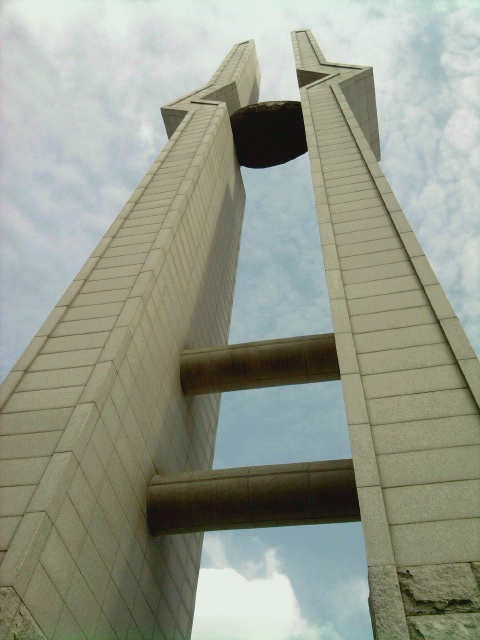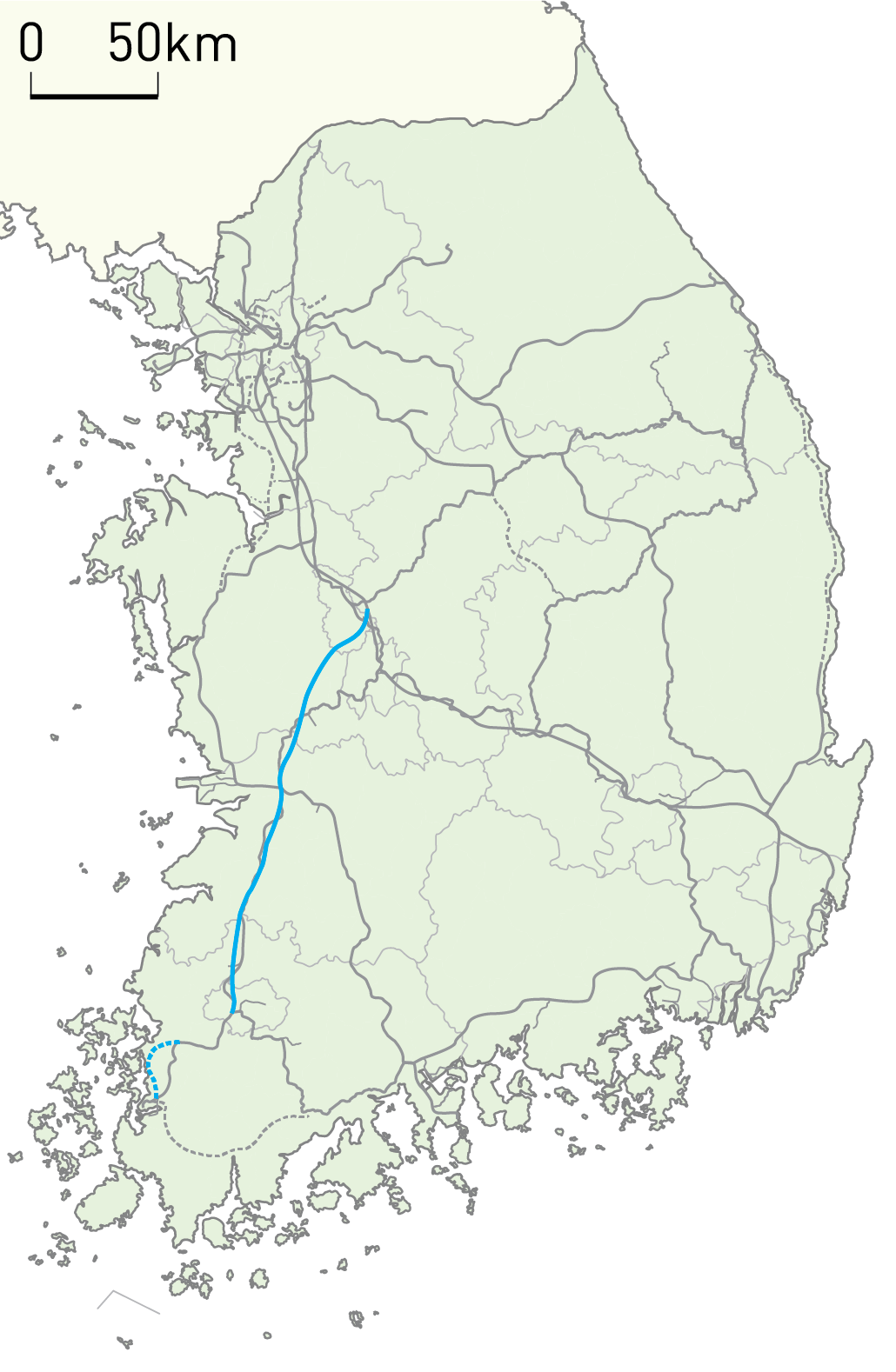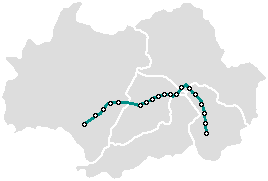|
GwangjuSongjeong Station
GwangjuSongjeong Station (formerly Songjeong-ri Station) is a station in Gwangju, South Korea. It is on the national high-speed KTX railway network, 341 km south of Yongsan Station. History The station opened on November 1, 1914, and the building was moved to its current location on September 18, 1988. KTX trains on the Honam Line began services on April 1, 2004. The government of Gwangju City changed the name of Songjeong-ri station to GwangjuSongjeong station on April 1, 2009.http://news.naver.com/main/read.nhn?mode=LSD&mid=sec&sid1=001&oid=098&aid=0002027570& in Korean Services GwangjuSongjeong Station serves KTX trains on the Honam Line. It also has express services and local services on the normal speed Honam Line and on the Gyeongjeon Line. Under the same name, the station is currently on Line 1 of Gwangju's subway network. From April 2, 2015, intercity bus stops were established in front of Songjeong station in Gwangju. See also * Transportation in South Kor ... [...More Info...] [...Related Items...] OR: [Wikipedia] [Google] [Baidu] |
Gwangsan District
Gwangsan District (Gwangsan-gu) is a district, similar to a ward, situated in the city of Gwangju, South Korea. The total population of the district, as of September 2004, is 295,294, and the population density of the district is 1,085 per 1 km. Its area is about 45% of the city of Gwangju. The district bird is the White Heron, the district flower is Magnolia, and the district tree is the Pine Tree. Gwangsan-gu has 1913 Songseong Market, and Songseong Market(held every 3,8day), Yonga birthplace, and there has Korean wheat festival. Sister cities * Jinnan, China China, officially the People's Republic of China (PRC), is a country in East Asia. It is the world's most populous country, with a population exceeding 1.4 billion, slightly ahead of India. China spans the equivalent of five time zones and ... References External linksWebsite of District {{SouthKorea-geo-stub ... [...More Info...] [...Related Items...] OR: [Wikipedia] [Google] [Baidu] |
Gwangju
Gwangju () is South Korea's sixth-largest metropolis. It is a designated metropolitan city under the direct control of the central government's Home Minister. The city was also the capital of South Jeolla Province until the provincial office moved to the southern village of Namak in Muan County in 2005 because Gwangju was promoted to a metropolitan city and was independent of South Jeolla province. Its name is composed of the words ''Gwang'' () meaning "light" and ''Ju'' () meaning "province". Gwangju was historically recorded as ''Muju'' (), in which "Silla merged all of the land to establish the provinces of Gwangju, Ungju, Jeonju, Muju and various counties, plus the southern boundary of Goguryeo and the ancient territories of Silla" in the ''Samguk Sagi.'' In the heart of the agricultural Jeolla region, the city is also famous for its rich and diverse cuisine. History The city was established in 57 BC. It was one of the administrative centers of Baekje during the Three ... [...More Info...] [...Related Items...] OR: [Wikipedia] [Google] [Baidu] |
South Korea
South Korea, officially the Republic of Korea (ROK), is a country in East Asia, constituting the southern part of the Korea, Korean Peninsula and sharing a Korean Demilitarized Zone, land border with North Korea. Its western border is formed by the Yellow Sea, while its eastern border is defined by the Sea of Japan. South Korea claims to be the sole legitimate government of the entire peninsula and List of islands of South Korea, adjacent islands. It has a Demographics of South Korea, population of 51.75 million, of which roughly half live in the Seoul Capital Area, the List of metropolitan areas by population, fourth most populous metropolitan area in the world. Other major cities include Incheon, Busan, and Daegu. The Korean Peninsula was inhabited as early as the Lower Paleolithic period. Its Gojoseon, first kingdom was noted in Chinese records in the early 7th century BCE. Following the unification of the Three Kingdoms of Korea into Unified Silla, Silla and Balhae in the ... [...More Info...] [...Related Items...] OR: [Wikipedia] [Google] [Baidu] |
Honam High Speed Railway
The Honam high-speed railway, also known as Honam HSR, is a high-speed rail between Osong (on the existing Gyeongbu high-speed railway) and Mokpo in South Korea. The line is a part of Korail's Korea Train Express (KTX) system, accelerating Seoul–Mokpo and Seoul–Gwangju KTX high-speed services which currently use the existing conventional Honam Line. On April 1, 2015, the line was inaugurated by the South Korean President Park Geun-hye with the attendance of 1200 invited guests and members of the public at Gwangju Songjeong Station in Gwangju, the line's terminus. The line diverges from Osong station on the Gyeongbu high-speed railway, and stops at Gongju, Iksan, Jeongeup Stations. Journey times between Seoul and Gwangju has been cut from 2 h 40 min to just 90 min, making daily commuting possible. The Honam HSR is intended to bring business, and economic opportunities to the province of Jeollanam-do, which has seen slower development than other parts of South Korea. The line ha ... [...More Info...] [...Related Items...] OR: [Wikipedia] [Google] [Baidu] |
Honam Line
{{Infobox rail line , box_width = auto , name = Honam Line , other_name = , native_name = 호남선(湖南線) , native_name_lang = kr , color = , logo = , logo_width = , logo_alt = , image = Korail Honam Line.png , image_width = , image_alt = , caption = , type = Heavy Rail, Passenger/freight railRegional rail, Intercity rail , system = , status = Operational , locale = DaejeonSouth ChungcheongNorth JeollaSouth JeollaGwangju , start = Daejeonjochajang , end = Mokpo , stations = 48 , routes = , daily_ridership = , ridership2 = , open = Stages between 1911 and 1914 , close = , owner = Korea Rail Network Authority , operator = Korail , character = , depot = , stock = , linelength_km = 252.5 , linelength_mi = , linelength = , tracklength_km= , tracklength_mi= , tracklength = , tracks = Dou ... [...More Info...] [...Related Items...] OR: [Wikipedia] [Google] [Baidu] |
Gyeongjeon Line
The Gyeongjeon Line (''Gyeongjeonseon'') is a railway line serving South Gyeongsang and South Jeolla Provinces in South Korea. It covers a total of 300.6 km, from Samnangjin Station in Miryang, South Gyeongsang, to Gwangju Songjeong Station in Gwangju, South Jeolla. History An east-west railway along Korea's southern shore was long seen as a strategic route, but it took a number of attempts to complete the line. The first section of the line was opened as a branch from the newly built Gyeongbu Line at Samnangjin to Masan in May 1905, which was named the Masan Line. On December 1, 1923, the Jinju Line opened from Masan to Jinju, extending the line to . A branch from Changwon on the ''Masan Line'' to Jinhae, the Jinhae Line, opened on November 11, 1926. Meanwhile, construction started in the opposite direction from Songjeong-ri (today Gwangju·Songjeong) on the Honam Line, the other end of the future Gyeongjeon Line, with the first to Gwangju opened in July 1922. The Gwa ... [...More Info...] [...Related Items...] OR: [Wikipedia] [Google] [Baidu] |
Korail
The Korea Railroad Corporation (Korean: 한국철도공사, Hanja: ), branded as KORAIL (코레일, officially changed to in November 2019), is the national railway operator in South Korea. Currently, KORAIL is a public corporation, managed by Ministry of Land, Infrastructure and Transportation. KORAIL operates intercity/regional, commuter/metro and freight trains throughout South Korea, and has its headquarters in Daejeon. History Historically, the South Korean railway network was managed by the ''Railroad Administration Bureau'' of the Ministry of Transportation before 1963. On 1 September 1963, the bureau became an agency that was known as ''Korean National Railroad'' (KNR) in English. In the early 2000s, split and public corporatization of KNR was decided by the South Korean government, and in 2003, KNR adopted the current KORAIL logo in blue to prepare corporatization. On 1 January 2005, KNR was split into ''Korea Railroad Corporation'' (KORAIL), which succeeded ra ... [...More Info...] [...Related Items...] OR: [Wikipedia] [Google] [Baidu] |
Gwangju Metro Line 1
Gwangju Metro Line 1 is a rapid transit line in Gwangju, South Korea, operated by the Gwangju Metropolitan Rapid Transit Corporation (GRTC, or Gwangju Metro). It connects Nokdong station in Dong-gu at its eastern terminus to Pyeongdong station in Gwangsan-gu in the west, via the central business district and Gwangju Airport. On maps, it is designated by teal (). The line began operations in 2004, making Gwangju the fifth South Korean city with a rapid transit system. History * August 28, 1996: Ground breaking ceremony for the Line 1 * April 28, 2004: Line 1 partially opened (Nokdong ↔ Sangmu) * April 11, 2008: Line 1 fully opened (Nokdong ↔ Pyeongdong) Stations As of 2021 Line 1 consists of twenty stations. Most trains operate between Pyeongdong and Sotae, with about one service per hour continuing to Nokdong station. Plan to extend Line 1 The Gwangju City Government has a plan to extend the current Line 1 southward to Hwasun and northward to Naju. Recently, the ... [...More Info...] [...Related Items...] OR: [Wikipedia] [Google] [Baidu] |
Gwangju Metro
Gwangju Metro () is the rapid transit system of Gwangju, South Korea, operated by the Gwangju Metropolitan Rapid Transit Corporation (GRTC, or Gwangju Metro). The subway network first opened in 2004 with 14 stations. The Gwangju Metro consists of one line, serving 20 operational stations, and operating on of route. It crosses both of the major rivers in Gwangju, the Yeongsan River and the Hwangryong River. Most of the system is underground, except for the sections between Sotae-Nokdong and Pyeongdong-Dosan. History * Apr 28, 2004 : Line 1 partially opened ( Nokdong ↔ Sangmu ) * Apr 11, 2008 : Line 1 fully opened ( Nokdong ↔ Pyeongdong ) Lines Line 1 As of 2021 Line 1 consists of twenty stations. Most trains run between Pyeongdong and Sotae, with about one train per hour continuing towards Nokdong. Line 2 Line 2 () of the subway is under construction as of 2021. It is scheduled to open in three phases between 2023 and 2025. Expansions and plans Plan to extend Line ... [...More Info...] [...Related Items...] OR: [Wikipedia] [Google] [Baidu] |
Intercity Bus Service
An intercity bus service (North American English) or intercity coach service (British English and Commonwealth English), also called a long-distance, express, over-the-road, commercial, long-haul, or highway bus or coach service, is a public transport service using coach (bus), coaches to carry passengers significant distances between different city, cities, towns, or other populated areas. Unlike a transit bus service, which has frequent stops throughout a city or town, an intercity bus service generally has a single stop at one location in or near a city, and travels long distances without stopping at all. Intercity bus services may be operated by government agencies or private industry, for profit and non-profit, not for profit. Intercity coach travel can serve areas or countries with no train services, or may be set up to competition (economics), compete with trains by providing a more flexible or cheaper alternative. Intercity bus services are of prime importance in lightly ... [...More Info...] [...Related Items...] OR: [Wikipedia] [Google] [Baidu] |
Transportation In South Korea
Transportation in South Korea is provided by extensive networks of railways, highways, bus routes, ferry services and air routes that traverse the country. South Korea is the third country in the world to operate a maglev train, which is an automatically run people mover at Incheon International Airport. History Development of modern infrastructure began with the first Five-Year Development Plan (1962–66), which included the construction of 275 kilometers of railways and several small highway projects. Construction of the Gyeongbu Expressway, which connects the two major cities of Seoul and Busan, was completed on 7 July 1970. The 1970s saw increased commitment to infrastructure investments. The third Five-Year Development Plan (1972–76) added the development of airports, seaports. The Subway system was built in Seoul, the highway network was expanded by 487 km and major port projects were started in Pohang, Ulsan, Masan, Incheon and Busan. The railroad network experie ... [...More Info...] [...Related Items...] OR: [Wikipedia] [Google] [Baidu] |




